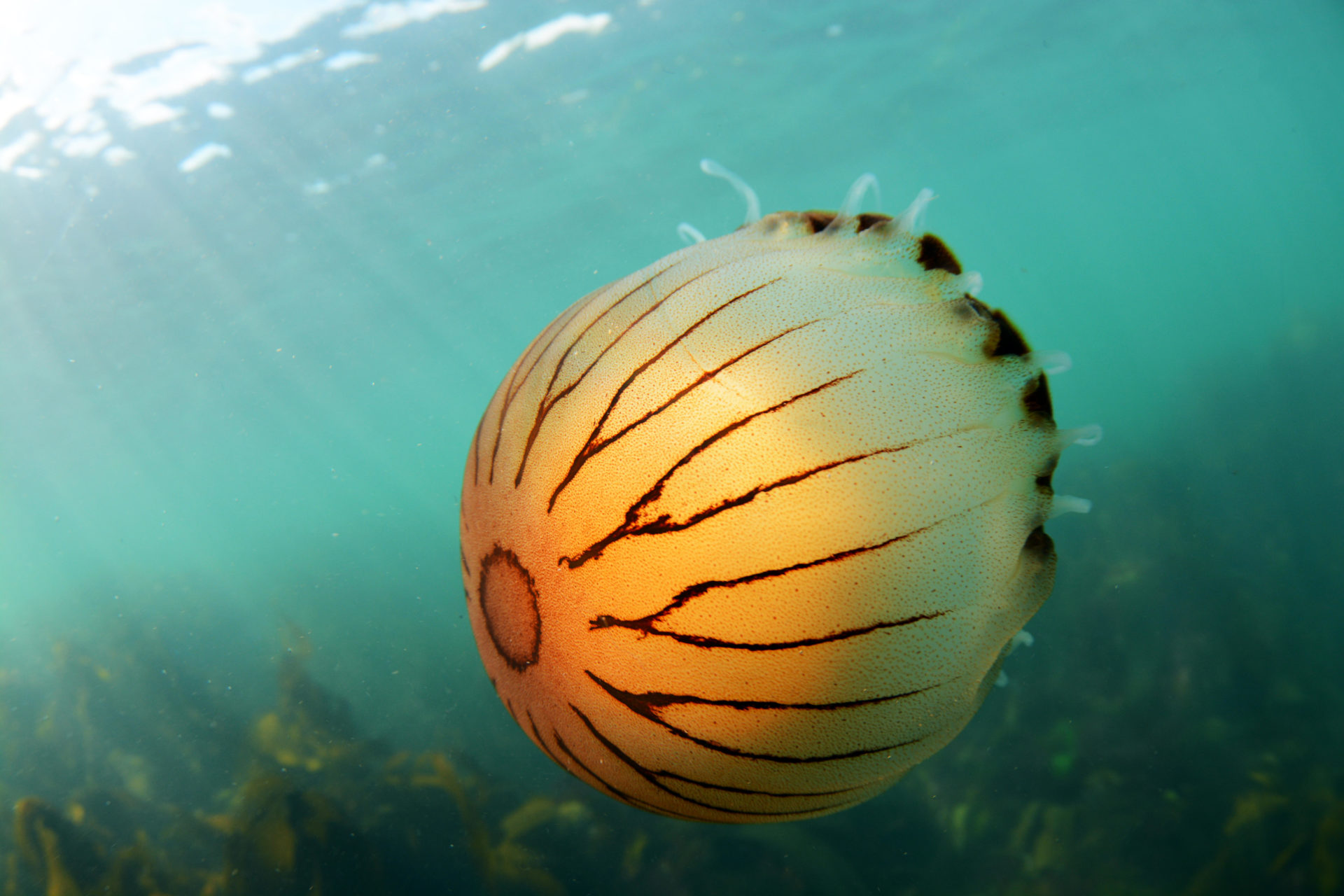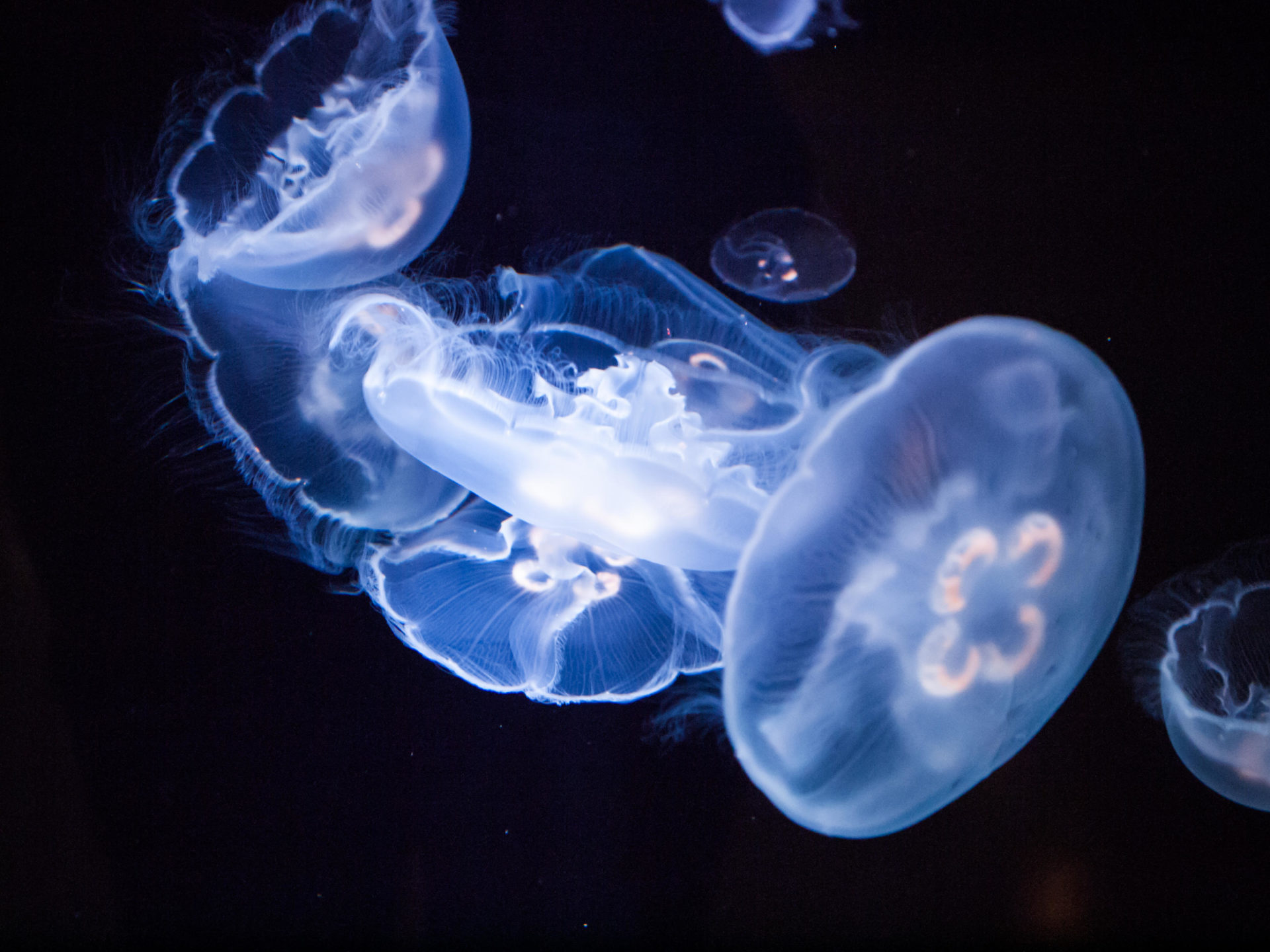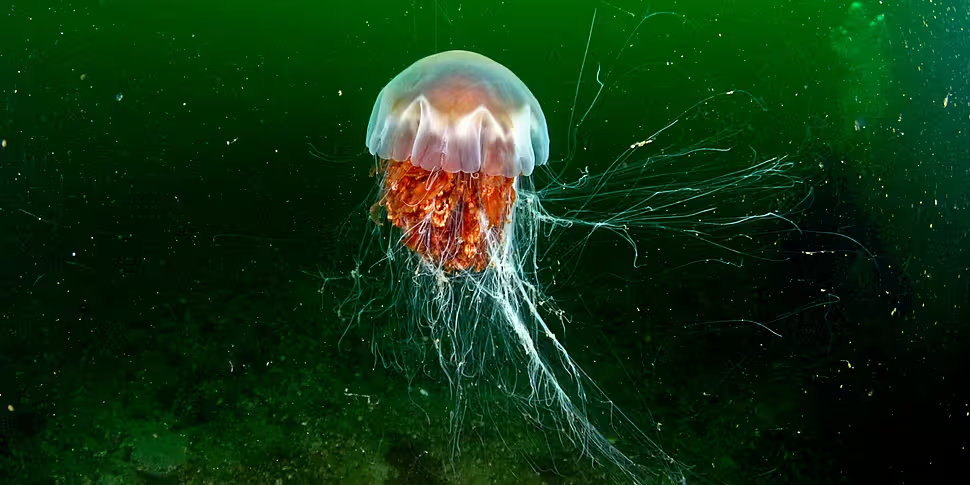Despite popular belief, peeing on a jellyfish sting is not the recommended antidote, according to Science Foundation Ireland
In recent years, the SFI has tracked more jellyfish on Ireland’s coasts than ever before.
Speaking to The Pat Kenny Show, their Director of Science for Society Dr Abigail Ruth Freeman said unlike most marine species, jellyfish are not actually fish.
“They're a visible plankton because they don't swim, they just drift on the currents, and they are very good at thriving in water that has less oxygen,” she said.
“They're able to reduce their oxygen use and store oxygen in those gelatinous tissues.
“The temperature has gone up by about a degree, so while other species are struggling to adapt, jellyfish are doing quite well.”
Stinging
Dr Freeman said jellyfish pierce through the skin and then inject venom into the body, which can have an effect on the nervous system and the heart.
“Invariably we'll get stung if we’re using the water these days,” she said.
 Compass Jellyfish off south Devon (Andrew Pearson / Alamy Stock Photos)
Compass Jellyfish off south Devon (Andrew Pearson / Alamy Stock Photos)If stung, Dr Freeman recommends flushing the sting “with seawater.”
“People pee on it and it's not the best thing to do,” she said.
“It will make it worse as will alcohol or any of those antiseptics you might put on.
“Remove anything visible – the best way to do that is with gloves or tweezers or the side of a credit card – slide it down and you'll pull out any barbs that are left in there.
“Put ice wrapped in a tea towel [on it], and you can take paracetamol or ibuprofen for a mild sting.
“For those worst ones, in particular the lion's mane, a bit of vinegar may help and then it's heat – hot 45-degree water and a heat pack or soaking it in water.”
Irish jellyfish
Dr Freeman said purple moon jellyfish are the most common in Irish waters.
“They're here in the summer, but luckily they don't sting us,” she said.
Dr Freeman said the three stinging jellyfish here are typically either the blue jellyfish, the compass jellyfish or the lion's mane jellyfish.
“The blue jellyfish [have] this angry purple colour inside and they have masses of tentacles and look quite ragged – they can give you a very painful sting,” she said.
“The compass jellyfish, which has 16 little marks around the edge, almost like a clock or a compass and really long tentacles – you might get stung by one and you'll never even see it.
“The lion's mane is the worst one that we get commonly, it's the red and yellow colouring – it does look like a lion’s mane – it can be painful and dangerous.”
Reproduction
Dr Freeman said overfishing of small fish has reduced the number of jellyfish predators in the oceans, which has increased their numbers further.
“They're winning on all fronts,” she said.
“If we could reverse the changes in the ocean, that's the way to stop this bloom of jellyfish.”
 Aurelia aurita (moon jellyfish, common jellyfish) in an aquarium at the Shaw Ocean Discovery Centre in Sidney, Canada. (Felix Choo / Alamy Stock Photo)
Aurelia aurita (moon jellyfish, common jellyfish) in an aquarium at the Shaw Ocean Discovery Centre in Sidney, Canada. (Felix Choo / Alamy Stock Photo)However, more species are being discovered as jellyfish predators, Dr Freeman told the show.
“We always knew turtles eat them, but things like penguins, albatrosses, ducks, and even crabs might be feeding on jellyfish,” she said.
“They're kind of like the snack food of the sea – they're not terribly good for you, but they're very easy to get.”
You can listen back here:
Main image shows Lion's Mane jellyfish, Cyanea capillata, underwater, in west Scotland (Colin Munro / Alamy Stock Photo)









